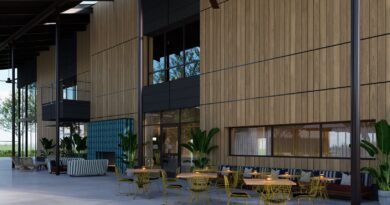Study: Dense Dallas Getting Hotter
[pullquote-left]“Cities do not cause heat waves — they amplify them.”[/pullquote-left]
The Dallas area is heating up and not in a good way.
A recent study by Brian Stone, a professor at Georgia Institute of Technology, found that Dallas is heating up faster than nearly every other American city. Only Phoenix, Arizona, is warming faster.
“The study … is a wake-up call for all of us who call Dallas and North Texas home,” said Texas Trees Foundation CEO Janette Monear in announcing findings of the Dallas 2017 Urban Heat Island Effect Study.
The study was conducted for the foundation with partial funding from Alliance Data of Dallas.
At issue is the way urban areas retain heat in such impervious surfaces as buildings and pavement, pushing temperatures up to 15 degrees hotter than in rural areas, where more trees and open space typically exist.
“Cities do not cause heat waves — they amplify them,” Stone stated in the study. He also authored The City and the Coming Climate — Climate Change in the Places We Live. “Human activities on climate at the city/regional scale, accounting for both land surface changes and emissions of greenhouses gases, may be twice as great as the impacts of greenhouse gases alone.”
Dallas has 35 percent impervious surfaces and the hottest areas saw average highs of 101 degrees Fahrenheit during the warmest months of the year.
“North Texas is seeing unprecedented growth, and with growth comes new buildings, roads, and parking lots,” Monear said. “It’s imperative that we come together to balance the grey with the green to ensure North Texas is a desirable place to live and work.”
The study found that tree planting and preservation in areas north of downtown, including the Park Cities, help offset the heat-island effect caused by urban development.
According to the study, University Park has 17,254 trees. Highland Park has 12,541.
The tree canopy in University Park is a major selling point, said UP community information officer Steve Mace. He said the city adjusted its tree ordinance nine years ago, resulting in the planting of hundreds of trees.
“The bigger commitment on behalf of the city is its reforestation efforts, which are ongoing,” Mace said.
Highland Park hasn’t set forestation goals nor specific standards for impervious surfaces and development but does regulate building footprint size and the amount of hardscape in front-yard areas, town administrator Bill Lindley said.
University Park resident Mary Graves belongs to the Dallas Historic Trees Coalition and is familiar with Stone’s study.
“I have friends who are really feeling the pain of development in our neighborhoods,” she said. “They’re building close to the edges of a lot and we’re losing that big canopy.”
It takes 50 to 100 years to grow big trees, and cutting them down is a mistake, she said. “People are grieving the loss of their trees.”








